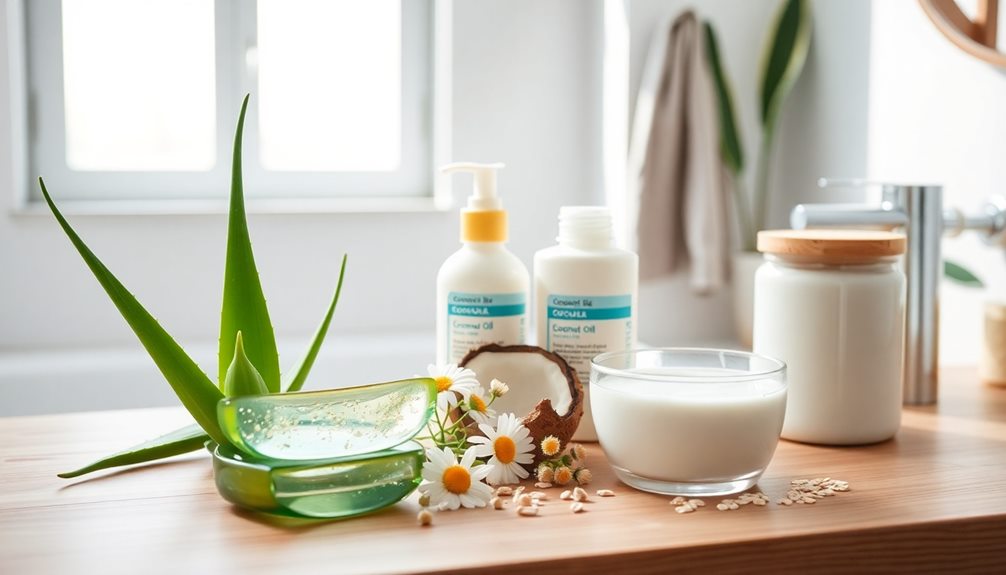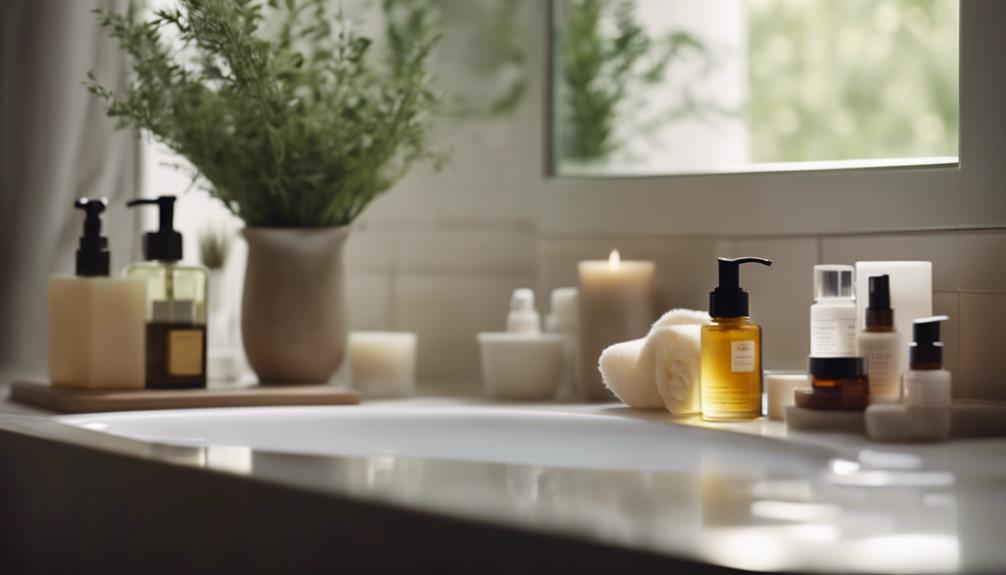To achieve optimal skin health, it is important to establish a regular skincare routine. Begin by cleansing your face twice a day with a gentle cleanser that is suitable for your skin type. Follow this up with targeted treatments, such as Vitamin C in the morning and retinoids in the evening, to address specific concerns. Remember to moisturize your skin when it is slightly damp to ensure optimal hydration. Incorporate specialized treatments like exfoliation and night creams to improve the overall health of your skin. Lastly, apply a broad-spectrum sunscreen daily for protection against harmful UV rays. Keep exploring for more tips and tricks to enhance your skincare routine.
Key Takeaways
- Establish a consistent routine by cleansing your face twice daily with a gentle cleanser suited to your skin type.
- Incorporate active ingredients like Vitamin C in the morning and retinoids at night to address specific skin concerns.
- Moisturize daily on slightly damp skin using a tailored moisturizer for your skin type to lock in hydration.
- Include specialized treatments, such as exfoliation and serums, to enhance skin texture and promote cell turnover.
Importance of a Skincare Routine
A consistent skincare routine is essential for keeping your skin healthy and preventing common issues like acne, dryness, and premature aging. By dedicating time to this routine, you're actively investing in your skin health.
Start with a suitable cleanser that matches your skin type—oily, dry, combination, or sensitive—to effectively remove dirt and impurities. This step lays the groundwork for further treatments.
Next, moisturizing is key. It hydrates your skin and helps maintain its barrier, preventing dryness and irritation.
Don't forget to incorporate sunscreen into your morning routine; it protects against UV damage, a significant factor in skin aging and cancer.
Essential Steps for Cleansing
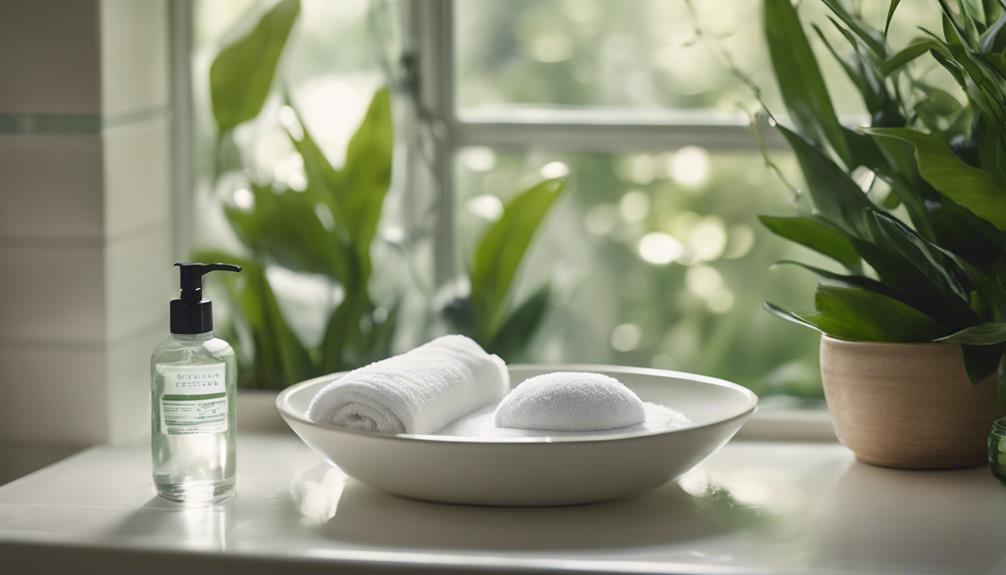
Cleansing your skin properly is the foundation of an effective skincare routine. You should cleanse twice daily—once in the morning to remove overnight oil and impurities, and once at night to eliminate dirt, makeup, and sunscreen residue.
Choose a gentle cleanser that suits your skin type: gel cleansers are perfect for oily skin, while cream cleansers work best for dry skin, guaranteeing you don't strip essential moisture.
When applying your cleanser, use circular motions for about 30 seconds, paying extra attention to areas prone to oil buildup, like your nose and forehead. After this, rinse with lukewarm water. This helps open your pores and guarantees that no cleanser residue remains, which could lead to breakouts or irritation.
If you wear heavy makeup or sunscreen, consider double cleansing. Start with an oil-based cleanser to effectively remove impurities, followed by a water-based cleanser for thorough cleansing. This method provides a deeper clean, addressing various skin concerns and leaving your skin refreshed and ready for the next steps in your skincare routine.
Treating Your Skin Effectively
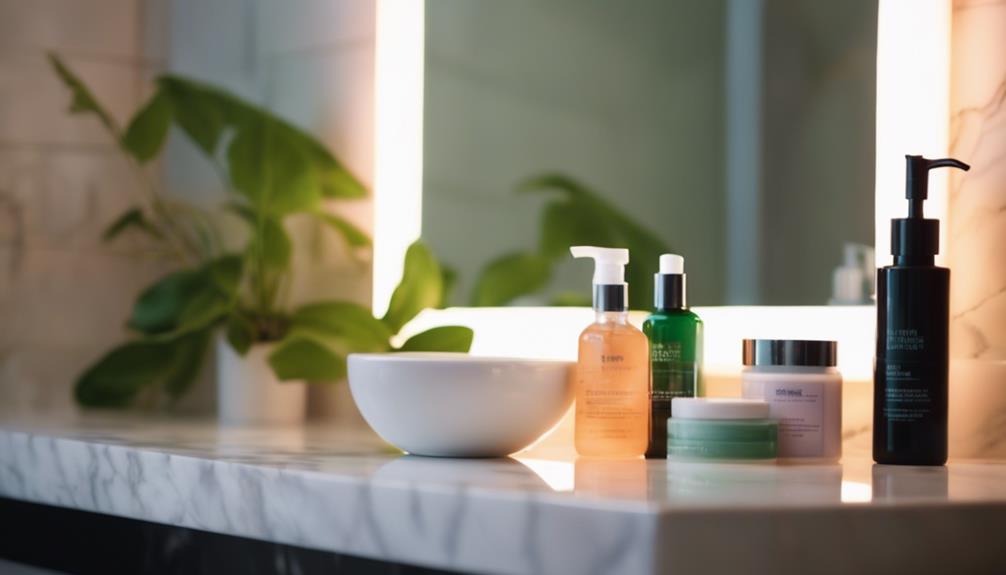
Treating your skin effectively involves incorporating the right active ingredients and applying them in the correct order to boost absorption and address your specific concerns.
Start your best skin-care routine in the morning with a Vitamin C Serum. This powerful antioxidant protects your skin from environmental damage and helps improve skin tone.
At night, consider using retinoids to enhance cell turnover and stimulate collagen production, reducing signs of aging.
For specific issues like acne, salicylic acid is your go-to. It penetrates pores to exfoliate dead skin cells, preventing breakouts.
Always apply your treatments in order, starting with thinnest serums and moving to thickest creams. This guarantees that each product can absorb effectively and perform its best.
If you have oily skin, opt for lightweight, non-comedogenic products to prevent clogging pores.
Regularly assess how your skin reacts to different products and adjust as needed, guaranteeing your routine evolves with your skin's needs.
Moisturizing for Optimal Hydration
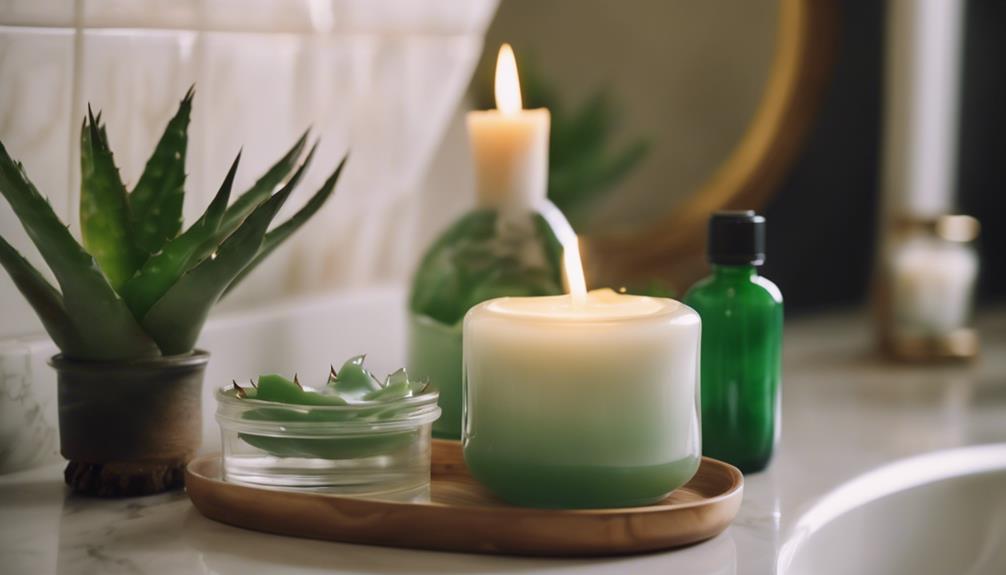
Moisturizing daily is essential for locking in hydration and keeping your skin barrier healthy. By applying moisturizer while your skin is still slightly damp, you enhance absorption, maximizing its benefits. Look for key ingredients like hyaluronic acid, which can hold up to 1,000 times its weight in water, providing intense hydration.
Here's a quick guide to choosing the right moisturizer based on your skin type:
| Skin Type | Recommended Moisturizer | Key Ingredients |
|---|---|---|
| Oily Skin | Lightweight, non-comedogenic | Hyaluronic acid, Gel-based |
| Dry Skin | Rich, creamy formulations | Shea butter, Glycerin |
| Combination | Balancing moisturizers | Aloe Vera, Jojoba oil |
| Sensitive Skin | Fragrance-free, soothing options | Chamomile, Calendula |
Consistent use of the right moisturizer can improve your skin texture and elasticity, resulting in a more youthful and radiant appearance. Remember, the right product tailored to your skin type not only prevents dryness and irritation but also nurtures your skin barrier, ensuring ideal hydration every day.
Specialized Treatments and Care
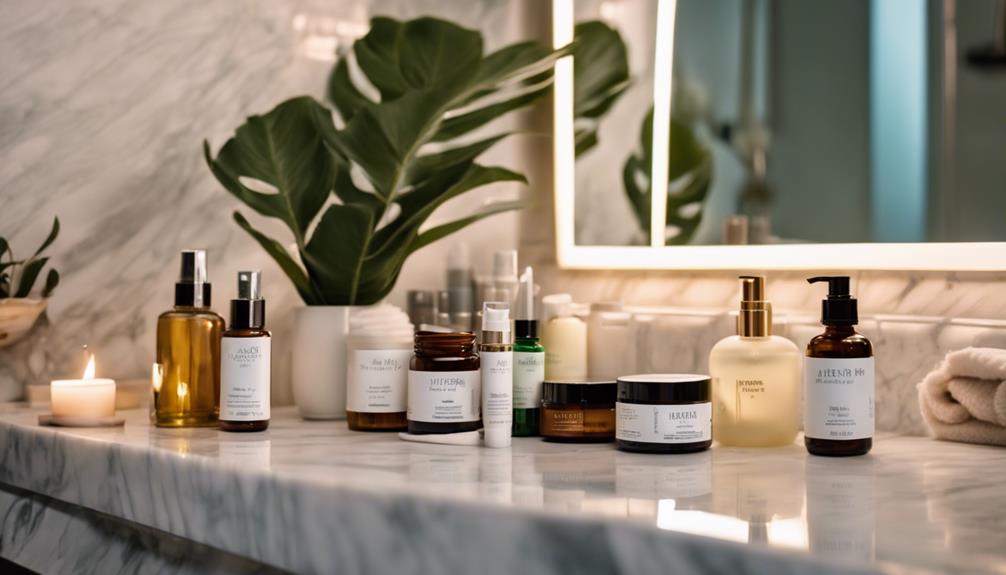
After establishing a solid moisturizing routine, adding specialized treatments can take your skincare to the next level by targeting specific concerns and enhancing overall skin health.
Incorporate serums that contain active ingredients like retinol or glycolic acid; these can greatly improve skin texture and promote cell turnover. For acne, targeted spot treatments with salicylic acid or benzoyl peroxide can effectively manage breakouts without irritating the surrounding skin.
Don't forget about exfoliation! Weekly exfoliation, whether through physical scrubs or chemical exfoliants, helps remove dead skin cells, revealing brighter, smoother skin.
Night creams and oils are essential for locking in moisture and promoting skin repair while you sleep. Look for formulations rich in ceramides and hyaluronic acid to enhance hydration.
Lastly, always apply broad-spectrum sunscreen with an SPF of 30 or higher during the day. This step is vital for preventing premature aging and protecting your skin from harmful UV damage, regardless of your skin type.
What are the essential steps for achieving glowing and healthy skin in a skincare routine?
Achieving glowing and healthy skin requires incorporating the best skincare routine tips into your daily regimen. Start with gentle cleansing, followed by exfoliation to remove dead skin cells. Next, use a serum or treatment tailored to your skin concerns, and finish with a moisturizer and sunscreen to protect your skin.
Conclusion
Incorporating a skincare routine is like nurturing a garden; with patience and care, your skin will flourish.
By consistently cleansing, treating, and moisturizing, you'll create a healthy environment for your skin to thrive.
Remember, specialized treatments can tackle specific concerns, just like targeted fertilizer boosts plant growth.
So, embrace these steps and watch your skin transform into its best version.
You deserve to feel confident and radiant every day!



